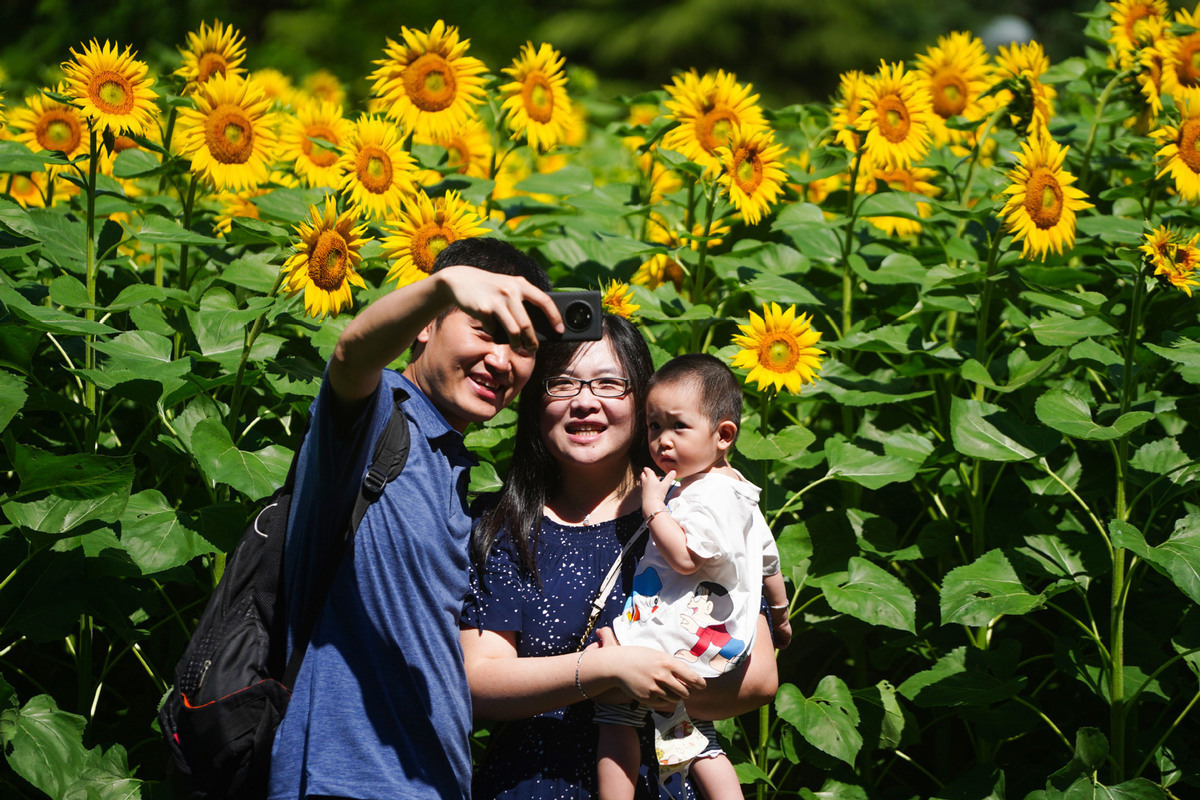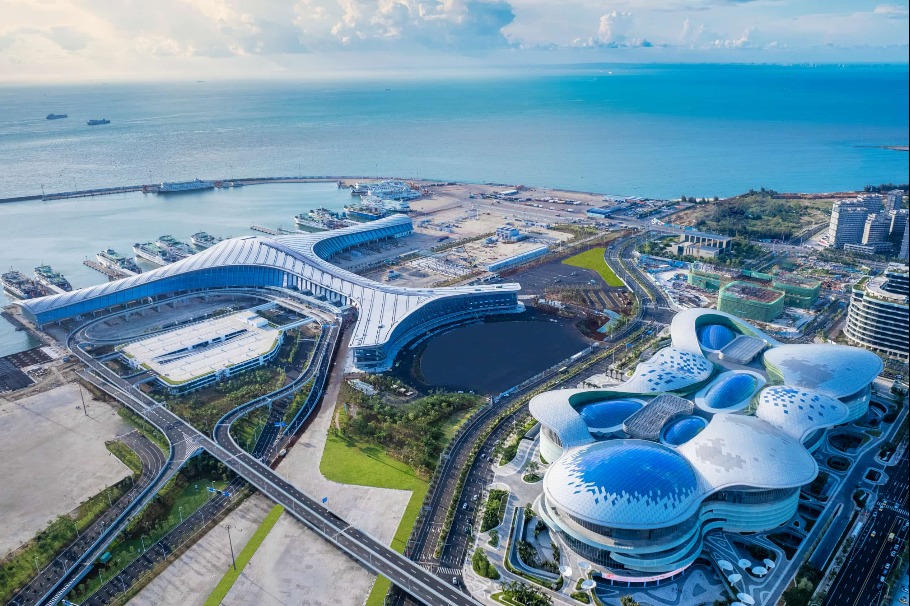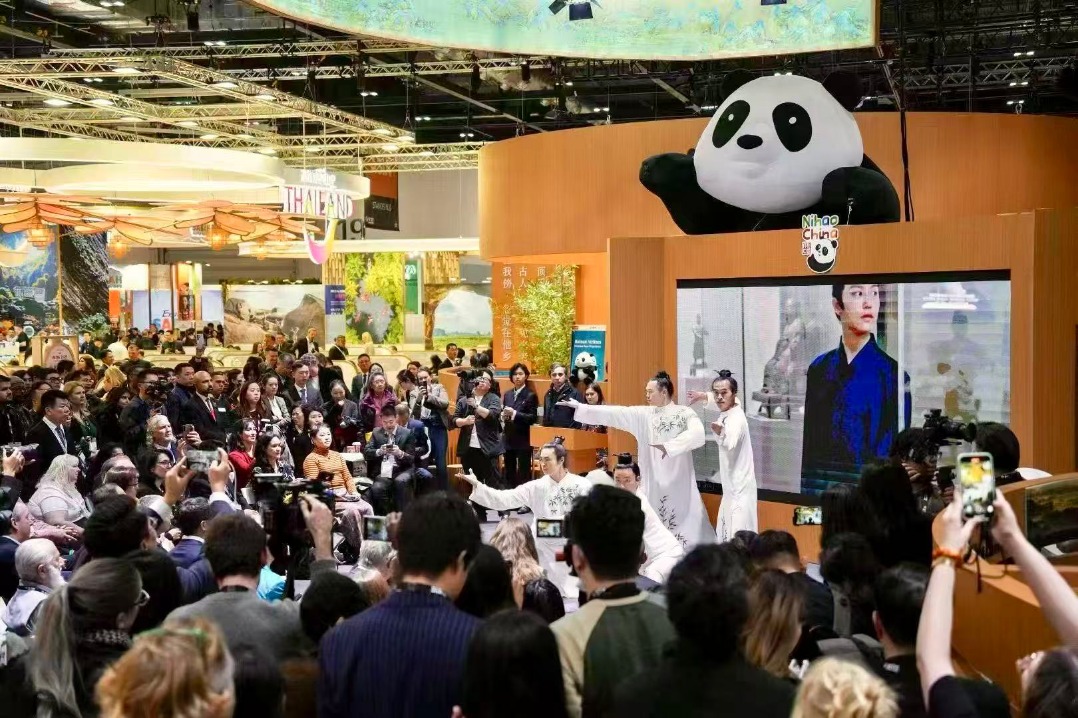Pursuing modernization for the well-being of people
By Liu Dongchao and Yan Xiao | China Daily | Updated: 2023-12-26 07:44

The Communist Party of China has been pursuing modernization and seeking happiness for the people since its founding more than a century ago. Given that the vast majority of workers and peasants in China lived in dire conditions and extreme poverty when the Party was founded in 1921, the Party tried to first improve the lives and living conditions of the poor people through struggle. Up to 1949, the Party's efforts to improve people's livelihoods focused on solving the basic living problems and improving the living conditions of the ordinary people in terms of food, clothing, housing, healthcare and education.
Comrade Mao Zedong had visionary thinking and planning for China's modernization at an early stage. On the eve of the nationwide victory, he proposed the steady transformation of China from an agricultural country to an industrialized nation after the revolution's success, aiming to build China into a great socialist country. Under the leadership of Mao, China went from a state of extreme poverty and backwardness, where "we couldn't even produce a car, an airplane, a tank, or a tractor" at the beginning of the establishment of the People's Republic of China, to the establishment of an independent and relatively complete industrial system and national economic system. China achieved breakthroughs in cutting-edge defense technologies such as "two bombs and one satellite" and nuclear submarines.
The First National People's Congress held in 1954 proposed the four modernizations as the main goals, which included industry, agriculture, transportation, and national defense.
Since the early days of the People's Republic of China in 1949 to the third plenary session of the 11th CPC Central Committee in 1978, the Party continued its efforts to improve people's livelihoods through various means. The "cultural revolution" (1966-76) interrupted this process and seriously affected the improvement of people's livelihoods, yet the Party's efforts yielded considerable results in terms of improving people's livelihoods during the nearly three decades.
Since the launch of reform and opening-up, the Party's understanding of modernization has gradually deepened. And the Party leaders repeatedly stressed the importance of continuing to improve the livelihoods of the vast majority of the people.
In 1979, the then Chinese leader Deng Xiaoping described modern agriculture, modern industry, modern national defense, and modern science and technology as goals of "Chinese four modernizations", and pointed out that Chinese modernization must start from China's reality.
As a result, the 12th CPC National Congress report in 1982 stressed that constantly meeting the people's ever-growing material and cultural needs is the fundamental purpose of socialist production and construction, and the improvement of the living standards of urban and rural people can only be achieved through the development of production. And after the 12th Party National Congress, China formulated a development strategy to achieve the socialist modernization in three steps by the middle of the 21st century.
With the advancement of reform and opening-up, China's social productivity and economy have both developed at a rapid pace, helping the country meet the basic needs of the people while helping generate more demands of the people.
Since the 18th Party Congress in 2012, the country's efforts to improve people's livelihoods have come into a new era. China has taken a variety of measures to improve the education and medical care systems, boost employment, strengthen social security and other fields, increasingly meeting the needs of the people. Since China succeeded in eradicating extreme poverty in 2020 and building a moderately well-off society in all respects, new needs of the people continue to emerge, further boosting the development of the country's economy and social undertakings.
In his report to the 20th CPC National Congress in October 2022, General Secretary of the CPC Central Committee Xi Jinping proposed and elaborated on the Chinese path to modernization. He emphasized that the path to modernization in China is the modernization of common prosperity for all.
Hence, the country's efforts to improve people's livelihoods should cover a broader and more diverse space. In this context, a large number of laws and regulations have been promulgated and a slew of measures to benefit the people implemented. As a result, the Party's cause of improving people's livelihoods has made significant progress, the people's needs for a better life are being met, and the people's sense of gain, happiness and security are being promoted.
For a large country with a vast land area and a large population like China's, to solve people's livelihood problems including education, healthcare, employment, eldercare and social security problems, there must be a leading force to assume the overall responsibility, and coordinate the work of all the parties, and that force is the CPC.
Moreover, the CPC leadership can always adhere to the people-centered principle, understand the characteristics of the different needs of the people in different times, formulate a policy system that is for the well-being of the people, and implement these policies with the help of competent personnel and rich resources.
The authors are research fellows with the Party School of the Central Committee of the Communist Party of China.
The views don't necessarily reflect those of China Daily.
























